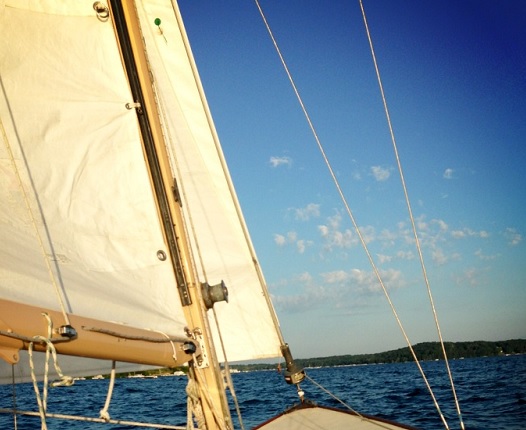In the spring of 2012, I bought this ten acre lot. In the spring of 2013, I finished construction on this home, that sits atop the small hill on this ten acre lot. After the lot was bought and the home was built, I refinanced my construction loan into a 30 year fixed rate mortgage. The rate? 3.625%. That’s cheap money, no matter how you cut it, and though old timers like my father may prefer to spend every last liquid cent they have in order to not require a loan, and in the process live like an orphaned child in the middle of the great depression, I’m all about indulging the Feds and taking their cheap money as long as they’ll give it. Cheap money thrown at bad investments is a bad thing, but cheap money thrown at value? That’s pure gold, without the speculative or inflationary pressures…

I still think there are plenty of lessons to be learned from our last housing cycle, so if you continue to read that I’m talking about peak this or peak that, it’s only because there are truths to be found when contrasting the peak to our current position. I think values today are still in line with some off-peak percentage, and I’ll continue to use that benchmark as long as I feel like it. Today, I feel like checking back, again. 2007 was probably our peak, though prices paid into 2008 reflect the same insane pricing. If we look at 2007, and we look at 2014, there are similarities. Inventory was somewhat low, and homes that were desirable seemed to sell as long as the price was somewhat tolerable. Value was not necessarily driving the market back then, but it would be hard to say that it’s driving most of our market now.
Interest rates today are around 4.15%. That’s not quite 3.625% low, but that’s insanely low. There has never been a better time to lock in long term rates on housing, unless, of course, we include most of 2013. That was a better time, but today is still good. The rates in 2007 were around 6.25%, which was insanely low if you have been alive for a few decades. When I started selling real estate in 1996 rates were around 8.5%, which was insanely low, given what we know the rates to have been in the early 80s. Insanely low is rather subjectively defined, but the fact that we’re a full two points lower now than we were in 2007 means these rates today are absolutely insanely low.
With the term “Insanely Low” now defined, we should look at the printed sales and see just how many of the buyers today are taking advantage of these rates. YTD 2014 we’ve seen 15 lakefront and lake access homes sell in excess of $1.2MM. The MLS provides a field where the agents are to tell us what sort of financing was involved in the sale- cash, conventional 30, ARM, OTHER, etc. Of the 15 this year, the MLS tells us that 11 of those have printed as cash. That’s a whopping 73% of these sales that have been cash. With rates in the low 4s, that’s a rather incredible statistic. It effectively says that the quality of buyer who has been buying in 2014 chooses to pay cash just because.
What of 2007? What of this peak year, when rates were a full 50% higher than they are today? That year, there were 19 lakefront and lake access sales over $1.2MM YTD. Of those, just five printed as cash per the MLS. That’s just 26% who paid cash for their vacation home, even though the rates were that much higher. It could be that back then buyers were more confident in their ability to generate other investment returns, so they kept their money working for them and financed the vacation home purchase. It could be they were less concerned about financial matters in general, and if money was cheap, which it was relative to its cost just a handful of years prior, why not lock it up? Or, it could simply be that the buyers of 2007 were less capable than are the buyers of today.
Of course that’s just my opinion, but the strength of the lakefront buyer is very important to the long term health of this market. If buyer’s finance their vacation home purchase, they do so because they’ve thought it out and have the liquidity to make that work in their overall financial picture. It can be very wise to finance a purchase here, as this cheap money simply cannot be around forever. Why not lock it now and reap the benefits of policy? On the other hand, paying cash allows a buyer to park a chunk of money in an asset that, if bought right today, should easily increase or at least maintain value over time. Whatever a buyer’s current move, I think it’s obvious that the buyers of 2014 are better positioned for long term success than were the buyers of 2007.
